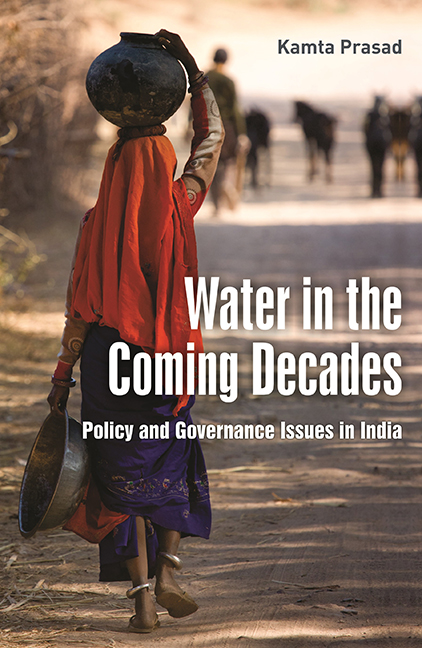Book contents
- Frontmatter
- Dedication
- Contents
- List of Tables
- List of Abbreviations
- Preface
- Acknowledgements
- Section I Overall Perspectives
- Section II Situational Analysis
- Section III Socio-economic, Institutional and Environmental Aspects
- Section IV Technological Options
- Section V Concluding Observations
- References
- Index
14 - Investment Criteria for Water Resource Projects
Published online by Cambridge University Press: 13 July 2022
- Frontmatter
- Dedication
- Contents
- List of Tables
- List of Abbreviations
- Preface
- Acknowledgements
- Section I Overall Perspectives
- Section II Situational Analysis
- Section III Socio-economic, Institutional and Environmental Aspects
- Section IV Technological Options
- Section V Concluding Observations
- References
- Index
Summary
To avoid or minimize arbitrary decisions, measurable criteria or standards for taking up investment projects are often prescribed by the government. Such criteria have been in existence for irrigation and flood management projects for a long time and are discussed in this chapter. Aspects related to irrigation projects are discussed first since government's investment in irrigation has a much longer history and has been more extensive. This is followed by criteria for flood management projects.
Financial return criterion for irrigation projects during the pre-independence period
The British approach to irrigation development started from 1836, after which several major projects were developed. Only those irrigation projects were taken up which could meet interest on loans after paying for other expenses.
An explicit criterion for investment in irrigation projects was announced in 1879, in terms of the financial return criterion, known as the financial productivity test or briefly as productivity test. Irrigation works, thus undertaken, came to be known as productive works. This test continued to prevail during the entire period of the British rule up to 1947 and continued thereafter also, till it was changed in favour of benefit cost ratio (BCR).
The financial results of an irrigation project in India were to be determined as follows.
i) By considering the capital cost of any work as the sum actually spent on its construction.
ii) By debiting the revenue account yearly with
- the simple interest on the capital cost of the works at the commencement of the year and
- the working expenses of the year.
iii) By crediting the revenue account yearly with
- direct receipts and
- indirect receipts.
The difference between (iii) and (ii) for one year would show the profit or loss for a particular year. The test of financial productivity was that a project should be able to show a certain percentage return on the sum-at-charge in the tenth year after its opening, the sum-at-charge being the capital cost plus the arrears of interest up to that year. The rate of return varied from time to time being influenced by variations in the long-term rate of borrowing of the Government of India.
- Type
- Chapter
- Information
- Publisher: Foundation BooksPrint publication year: 2014



